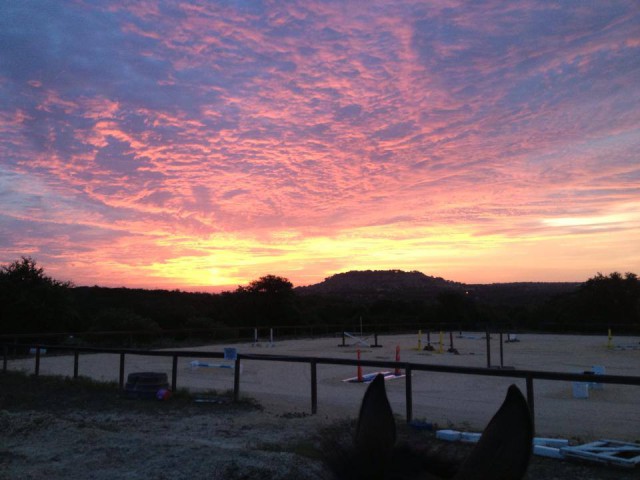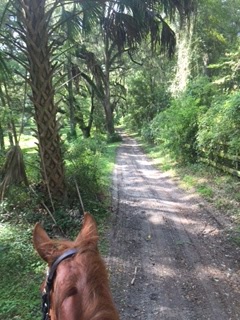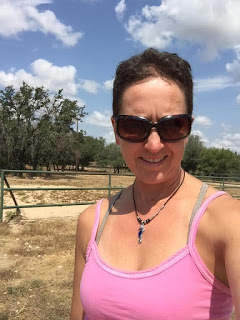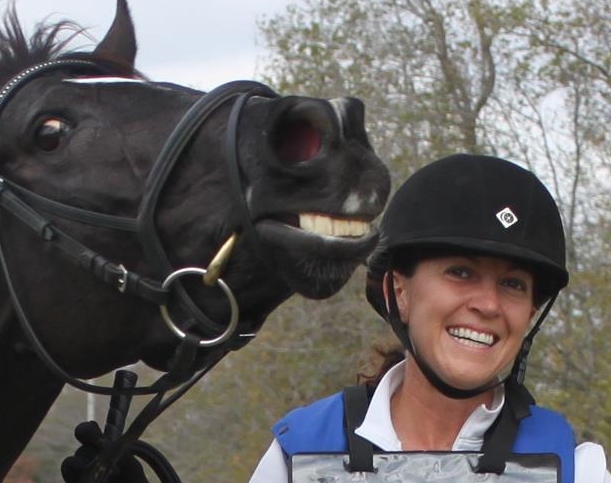EN’s good friend Laura Szeremi AKA Bad Eventer recently had the opportunity to participate in a clinic with LandSafe, whose Landsafe Rider Fall Safety System training program is designed to teach the best practices of fall prevention and response. (Despite what Laura would have you believe, she is actually a very very good eventer!) Laura was kind enough to share her experience with EN. You can keep up with Laura via her blog, Tales from a Bad Eventer, here.
Editor’s Note: LandSafe believes participants should learn to clear the head and neck properly first before introducing a helmet and vest. EN strongly recommends wearing a helmet at all times when mounted on a horse.

All photos courtesy of Laura Szeremi
I admit it. I’ve ALWAYS wanted to ride a mechanical bull.
Always.

But every time I’ve had the opportunity, my thoughts went something like “I could get hurt and not be able to ride tomorrow” or “The individual running it might be drunk and could get me killed” or “I ride dangerous horses in a dangerous sport, I should probably stick to that.”
In the end I reasoned that if I got hurt doing something so stupid I just couldn’t live with it, and I’ve managed to talk myself out of it every single time.
Besides mechanical bulls, I’m also obsessed with safety in our sport and particularly rider and horse falls. The fact that I’ve had a serious fall and own some extensive facial hardware thanks to it …

… may or may not have something to do with my passion on the topic.
I read every single safety article, study reference and video review, and I comb through all the data I can find. I LOVE data. So when I saw the LandSafe team set up at Ocala Horse Trials …

… I could see from across the park that they had a mechanical horse set up to simulate falls. I nearly sprinted over there.

Bad Eventer had found her chance to finally justify getting on that “mechanical bull”! This was about safety! And I get to fall off a mechanical horse onto a super soft landing.
I could NOT sign up fast enough! And the Bad Event Groom got volun-told to sign up with me!
As excited as I was to sign up for the LandSafe clinic, I really am a big chicken. And of course the first step: liability waiver. BadEventer = Massive scaredy cat.

Fortunately they have a plan for that, and didn’t just toss us off the mechanical horse first thing!

But before I tell you the rest of my story, some real talk.
Safety in our sport and reducing rider risk is such an important topic to me that I’m going to make a rare exception to the BadEventer No-Real-Names rule. The BadEventer stories have never used real names. Full disclosure, many of the “identifying details” of characters I describe are often changed to protect the innocent, or the not-so-innocent, in my tales.
So let me introduce for the first time some real names.
This is about safety.
And reducing rider risk.
And saving lives. So let’s start with the decidedly NOT fun part of this story.
Nikita Sotskov, Philippa Humphreys, Caitlyn Fischer, Olivia Inglis, Guillaume Pucci, Sabrina Manganaro, Francisco Seabra, Benjamin Winter, Jordan McDonald, Cathal O’Malley, Tom Gadsby, Bruno Bouvier, Sebastian Steiner, Robin Donaldson, Elena Timonina, Dirk Grouwels, Ian Olding, Jade South, Emma Jonathan, Stephen Moore, Karen Rodgers, Franz Graf, Shannon Bloomfield, Eleanor Brennan, Maia Boutanos, Tina Richter-Vietor, Anke Wolfe, Elin Stalberg, Julie Silly, Jo-Anne Williams, Amelie Cohen, Amanda Bader, Kim Hyung Chil, Sherelle Duke, Caroline Pratt, William Booth, Cindy Burge, Samantha Hudson, Rhonda Mason, Mark Myers, Jemima Johnson, Peter McLean, Simon Long, Polly Phillips, Robert Slade, Peta Beckett, Keith Taylor, David Foster, Tasha Khouzam, Roberta Scoccia, Linda Riddle, Amanda Warrington, Sam Moore, Anna Savage.
If you’ve been around our sport for any length of time, you’ll quickly recognize these names. These are riders who died while eventing.
I truly believe this can change and that we don’t need to add any more names to this list. There are multiple pieces and parts to examine when it comes to reducing risk. While course design, fence construction and qualifications get much deserved attention, safety is being suitably mounted on the “right horse” at the “right level” on the “right day.” In summation, nothing is more important to safety than rider responsibility.
Now that the not-fun part is over with, let me introduce the fabulous cast for the rest of this story. Cue the stage entrance music: the fabulous BadEvent Groom, Tegan Henderson …
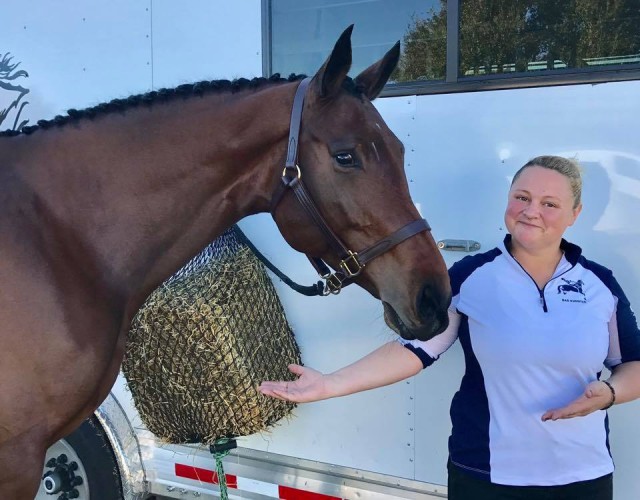
… who is also an amazing artist! Check out this painting she did of the Zebrasaurus!

Joining us in the fun was the very talented rider Zachary Brandt.
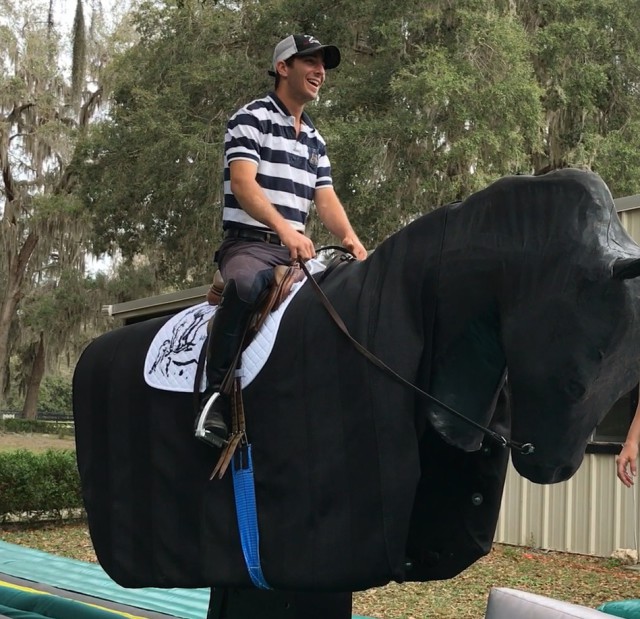
Then we have the LandSafe creators and instructors Danny Warrington …
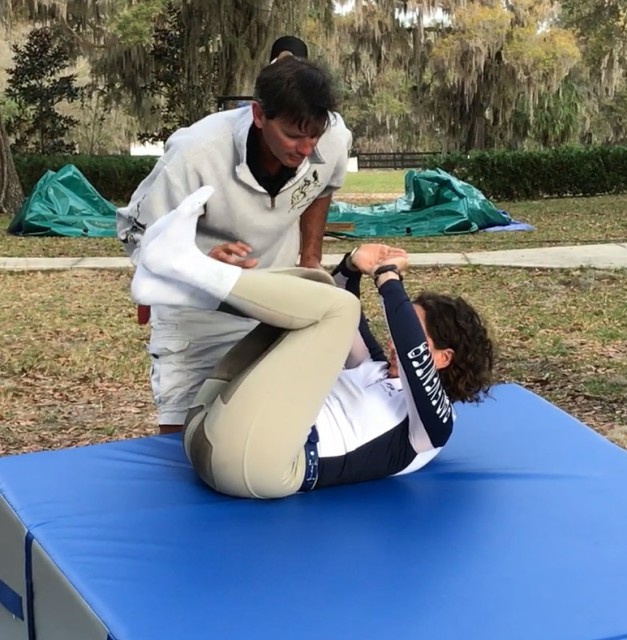
… and Keli Warrington.

The first day started with some stretching and concept introduction. This is where I remembered how incredibly BAD I was in gymnastics. As a child I was thrown out quit gymnastics after about two weeks due to my overall lack of aptitude for the discipline.
Fortunately you don’t have to be a world class gymnast to learn how to fall and we started slowly.

I fully admit when they said eventually we’d be doing “dive rolls” over a tower of mats, I didn’t think THAT was ever going to happen.
Shockingly, with plenty of fun and hilarity we all got there.
When we got to the horse we started slowly, with extra padding and a spotter. Zach was the first volunteer.

And when it was my turn, I was NOT disappointed!
The first time, in true BadEventer style, I landed on my head!

Boy is THAT a good reason to take the Landsafe Reducing Rider Risk clinic!
Learn more about LandSafe and view the upcoming clinic schedule here. Stay tuned to EN for a full report on LandSafe’s mission to save lives, reduce injuries and increase safety education of riders.





































